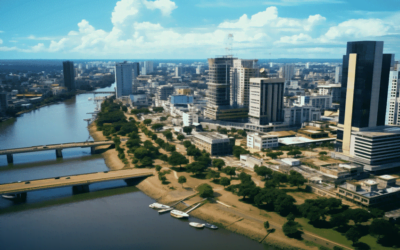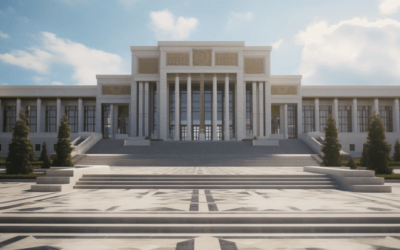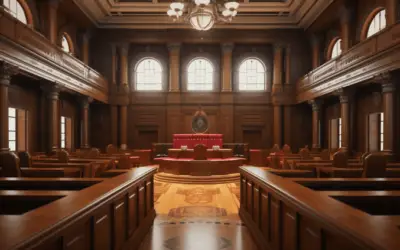Hey there, fellow drone enthusiasts and seekers of knowledge! I understand that you’ve found your way here in search of answers regarding South Korea’s drone laws. The world of drones is fascinating and full of potential, but navigating the legal landscape can be tricky.
Whether you’re a hobbyist, a drone pilot, or simply curious, it’s crucial to know the lay of the land when it comes to drone regulations. So, you’re in the right place if you’re seeking clarity on South Korea’s drone laws.
Well, let me tell you, I’ve been down that rabbit hole too. I’ve conducted some thorough research into South Korea’s drone laws to provide you with the answers you seek.
From delving into the registration requirements to understanding no-fly zones, altitude restrictions, and even the intricacies of nighttime drone flights, I’ve gathered valuable insights that I’m excited to share with you.
The regulations can seem complex, but I’ve sifted through the jargon to offer you a clear, concise, and practical guide based on my extensive research.
So, if you’re wondering how to legally and responsibly take to the skies with your drone in South Korea, stick around.
This article is your key to unlocking the world of drone operation within the bounds of the law. You’ll find answers to your search intent right here.
Let’s embark on this journey together, exploring South Korea’s drone laws and ensuring that you’re not only informed but also equipped to enjoy the skies safely and responsibly. Read on, and let’s make your drone adventures in South Korea soar to new heights!
- Registration and Identification
- No-fly Zones and Restricted Areas
- Altitude Restrictions
- Visual Line of Sight (VLOS)
- Nighttime Operations
- Commercial Drone Use
- Privacy and Ethical Considerations
- Insurance Requirements
- Staying Informed and Compliance
- Final Thoughts on South Korea Drone Laws
- Frequently Asked Question
Registration and Identification

Now, let’s get into the nitty-gritty of South Korea’s drone laws, starting with the crucial aspect of registration and identification.
Ensuring that your drone is properly registered is like having your passport ready for a journey. It’s not just a legal obligation, but it also paves the way for safe and responsible drone operations.
Mandatory Drone Registration Requirements
So, here’s the scoop. South Korea has specific requirements for drone registration, and it’s pretty much a must if your drone tips the scales at more than 250 grams. It’s all about accountability. Think of it like registering your car but in the sky.
I know what you’re thinking; registration can be a bit of a hassle. However, it’s not just about paperwork.
It’s about being part of a community of responsible drone operators, ensuring that the skies stay safe for all. Remember, in the drone world, safety is paramount, and registration is the first step toward achieving that.
Differentiating Between Drones Based on Weight
Now, let’s talk weight. South Korea differentiates drones based on their weight, and this makes sense. It’s like categorizing vehicles by size and engine power. So, the weight of your drone plays a significant role in determining whether you need to register it or not.
If your drone is under 250 grams, you might be in the clear. But once it crosses that threshold, you’re in registration territory. This differentiation simplifies the process, making it easier for drone owners to understand and comply with the regulations.
The Role of the Ministry of Land, Infrastructure, and Transport (MOLIT) in Registration
MOLIT, the Ministry of Land, Infrastructure, and Transport, is the authority overseeing drone registration in South Korea. They’re the gatekeepers, ensuring that drones are properly registered and that operators abide by the law. Think of them as the referees in this game, ensuring a fair and safe play.
MOLIT’s involvement is essential to maintaining order and accountability in the world of drone operations. Their guidelines and regulations are there to make sure everyone is on the same page, contributing to a safe and secure drone ecosystem.
Remote Identification System (if Applicable)
In some cases, you might need to equip your drone with a remote identification system. This technology helps authorities track and identify your drone in real time. Think of it as a drone’s digital fingerprint, allowing authorities to ensure that it’s you who’s responsible for that drone up in the sky.
While not all drones require this, it’s an added layer of security and accountability, especially in situations where there may be privacy or security concerns. It’s a measure designed to balance the benefits of drone technology with safety and responsibility.
So, be sure to check if your drone falls under this category and comply with any requirements accordingly.
Also Read: North Korea Drone Regulations 2024
No-fly Zones and Restricted Areas

Now, let’s explore the skies and learn about the no-fly zones and restricted areas in South Korea. Just like any adventure, drone flying comes with its own set of rules and boundaries. Knowing where you can’t fly is as important as knowing where you can, so let’s dive into it.
Identification of Key No-fly Zones, Including Airports and Military Bases
First things first, we have to talk about no-fly zones, and South Korea has them in place to keep everyone safe.
These areas include airports and military bases. You wouldn’t want your drone wandering into the path of a landing or taking off a plane, right?
So, these no-fly zones are marked, and the regulations are in place for good reasons. When you’re out there exploring with your drone, make sure you know where these zones are located. It’s all about safety and responsibility.
Restricted Areas Near Government Buildings and Sensitive Locations
Beyond airports and military bases, there are also restricted areas around government buildings and sensitive locations. It’s all about respecting privacy and national security. You wouldn’t want to inadvertently capture sensitive information with your drone camera, right?
So, it’s crucial to be aware of these areas and to exercise extra caution when flying near them. South Korea’s drone laws emphasize responsible and respectful drone operation, and these regulations play a key role in ensuring that.
Penalties for Flying in Restricted Areas
Now, let’s talk about the consequences. Flying your drone in these restricted areas can lead to penalties and legal issues. It’s essential to be aware of the fines and possible legal actions you might face if you disregard these regulations.
Penalties vary, but they can include fines or even criminal charges in severe cases. So, it’s not a risk you’d want to take lightly. Understanding and respecting no-fly zones and restricted areas is vital for responsible drone operation.
The Importance of Consulting Official Maps and Apps for Airspace Information
Here’s a pro tip: stay informed. Always consult official maps and apps that provide up-to-date airspace information before you take your drone out for a spin. It’s like checking the weather forecast before planning a picnic.
By using these resources, you can easily identify the no-fly zones and restricted areas, ensuring you stay on the right side of the law and keep everyone safe. It’s all part of the responsibility that comes with being a drone pilot. So, remember, checking the maps and apps is your compass to safe and enjoyable drone flights in South Korea.
Also Read: Kiribati Drone Regulations 2024
Altitude Restrictions

Let’s take a look up at the sky because we’re diving into altitude restrictions. Knowing how high you can fly your drone is not just about following the rules, but it’s also about ensuring the safety of everyone in the airspace. So, let’s explore the altitude regulations in South Korea.
Maximum Allowable Altitude for Drone Flights
When it comes to drone altitude in South Korea, there’s a limit of 150 meters above ground level.
Think of it as a virtual ceiling for your drone adventures. This limitation is in place to avoid any potential clashes with manned aircraft, like planes or helicopters.
Sure, it might feel a bit restrictive, but it’s a vital safety measure. By adhering to this altitude restriction, you’re not only following the law, but you’re also contributing to a safer sky for all. Responsible drone pilots understand that safety takes precedence over soaring heights.
Ensuring Drone Safety and Avoiding Interference with Manned Aircraft
Why the limit, you might ask? Well, it’s all about coexisting peacefully in the sky. Drones are getting more popular, and the last thing anyone wants is a drone and a commercial airliner sharing the same airspace. It’s not a scenario we want to envision.
So, by respecting the altitude restrictions, you’re helping to avoid potential interference with manned aircraft. It’s not just about following the rules; it’s about being part of a community that prioritizes safety and responsibility in the world of drone flight.
Monitoring Technology to Enforce Altitude Restrictions
You might be wondering how they ensure everyone follows these altitude rules. South Korea, like many other countries, utilizes monitoring technology to enforce these restrictions. Think of it like traffic cameras but for the sky.
These monitoring systems help authorities keep an eye on drone flights and ensure that they’re within the legal altitude limits. It’s not about Big Brother watching; it’s about keeping everyone safe and accountable. So, if you’re out there flying your drone, know that there’s technology in place to make sure we all play by the same rules and respect the skies we share.
Also Read: Kenya Drone Regulations 2024
Visual Line of Sight (VLOS)

Alright, let’s talk about the visual line of sight (VLOS). It’s a concept that’s as crucial as it is straightforward. Imagine being able to see your drone at all times while flying. That’s the essence of VLOS, and it’s a fundamental safety practice for responsible drone operation.
The Concept of Maintaining Visual Contact with the Drone
Picture this: you’re out in a beautiful open field, and your drone is up in the sky, capturing breathtaking views.
VLOS simply means that you should always be able to see your drone, like a constant visual connection. It’s like keeping an eye on a kite in the sky. If you can’t see it, you can’t control it properly.
VLOS isn’t just a rule; it’s a safety net. It ensures that you’re aware of your drone’s surroundings and can respond to any unexpected situations promptly. Maintaining a visual link to your drone is like having your finger on the pulse of the flight, keeping it secure and under your control.
VLOS as a Safety Measure for Responsible Drone Operation
Why is VLOS so important? Well, it’s all about safety and being a responsible drone operator. When you can see your drone, you can avoid potential collisions with obstacles or other aircraft. You can also steer clear of no-fly zones and restricted areas, ensuring that your flights remain within the bounds of the law.
Safety is a shared responsibility, and VLOS is a significant part of it. It’s not just a guideline; it’s a mindset that emphasizes accountability and awareness. So, when you’re out there exploring the skies with your drone, remember that maintaining visual contact is your key to a secure and responsible flight.
Legal Implications of Flying Beyond the Operator’s Line of Sight
Now, if you’re thinking of pushing the boundaries and flying beyond your line of sight, here’s a heads-up on the legal side. South Korea, like many countries, has regulations in place regarding VLOS. If you fly your drone beyond your visual line of sight, you might be stepping into a legal gray area.
It’s essential to understand the implications. Flying beyond VLOS can lead to potential legal issues, including fines and penalties. So, while it might be tempting to explore the distant horizons, it’s crucial to weigh the risks and responsibilities that come with it. Always remember, that safety and responsibility go hand in hand in the world of drone operation.
Also Read: Kazakhstan Drone Regulations 2024
Nighttime Operations

Let’s shed some light on nighttime operations with drones in South Korea. Flying your drone in the dark can be a captivating experience, but it comes with its own set of rules and safety measures. So, whether you’re capturing the cityscape under the stars or exploring the mysteries of the night, let’s navigate through the regulations that guide these nighttime adventures.
Regulations Governing Drone Flights During Nighttime
When the sun dips below the horizon, the rules for drone flights change a bit. In South Korea, there are specific regulations governing nighttime drone operations. These rules aim to balance the beauty of night flights with the importance of safety and security.
For instance, your drone should be equipped with the right lighting and reflectors to ensure it’s visible in the dark.
Additionally, you might need to follow specific flight plans and notify relevant authorities of your nighttime flights. These regulations are in place to protect both your drone and the airspace it shares with other aircraft.
Lighting and Equipment Requirements for Nighttime Operations
One key aspect of nighttime drone flights is ensuring your drone is well-lit and equipped for low-light conditions. Imagine it as lighting up a path in the dark.
Your drone should have adequate lighting to make it visible to others, especially if you’re flying near urban areas or populated regions.
Adding lighting and reflectors to your drone might seem like an extra step, but it’s crucial for safety.
It not only keeps your drone within legal compliance but also reduces the risk of collisions in the night sky. Think of it as ensuring that you’re a responsible pilot, taking the necessary steps to keep everyone safe.
Safety Precautions for Flying Drones in Low-Light Conditions
Safety first, right? When flying your drone at night, it’s important to take additional safety precautions. You should have a clear understanding of your surroundings, especially in low-light conditions. Flying in the dark means you might have limited visibility, so being extra cautious is essential.
Plan your flights meticulously, be aware of any obstacles, and avoid flying in adverse weather conditions. Additionally, always keep an eye on your drone and ensure that it stays within your line of sight, even in the dark. It’s all about responsible flying, enjoying the beauty of the night, and prioritizing safety every step of the way.
Also Read: Jordan Drone Regulations 2024
Commercial Drone Use

Now, let’s talk business – commercial drone use in South Korea. If you’re considering using your drone for profit, whether it’s capturing stunning aerial shots or providing services, there are a few essential details you need to be aware of. So, let’s unravel the regulations surrounding commercial drone operations.
Additional Permits and Licenses Required for Commercial Drone Activities
Turning your drone hobby into a business venture is exciting, but it does come with a bit of paperwork. South Korea requires specific permits and licenses for commercial drone activities. It’s like getting a business license for your drone endeavors.
These permits are in place to ensure that businesses operating drones are doing so safely and responsibly.
They cover a range of activities, from aerial photography to agricultural surveying. While it might seem like a bureaucratic hurdle, it’s all about demonstrating your commitment to professional, secure, and ethical drone operation.
Differentiating Between Recreational and Commercial Use
South Korea, like many other countries, distinguishes between recreational and commercial drone use. This differentiation is essential, as it helps define the rules and regulations that apply to each category.
For instance, if you’re flying your drone for personal enjoyment, you might have more flexibility than someone operating it for profit.
Understanding this distinction is crucial to ensure you’re following the right set of rules. It’s all about clarity and transparency, making sure that both recreational and commercial drone operators can enjoy the skies without any gray areas.
Compliance with Regulations for Drone-Based Businesses
Compliance is the name of the game for drone-based businesses in South Korea. From adhering to no-fly zones to maintaining the required permits, compliance with regulations is non-negotiable. It’s like any other business operation; you need to meet the legal standards.
This isn’t just about keeping the authorities happy; it’s about ensuring the safety of the public and other aircraft. Compliance guarantees that your business is contributing to a secure and responsible drone ecosystem. So, if you’re venturing into commercial drone use, buckle up for a journey that combines passion with professionalism, and ensures you’re on the right side of the law.
Also Read: Japan Drone Regulations 2024
Privacy and Ethical Considerations

As we explore the world of drone operation, we can’t forget about the ethical and privacy aspects that come with it. Drones can capture stunning aerial views, but they also raise important questions about respecting individuals’ privacy and using this technology responsibly. Let’s delve into these considerations.
Respecting Individuals’ Privacy While Flying Drones
Respecting privacy is a cornerstone of responsible drone operation. When you’re flying your drone, it’s crucial to consider how your actions might affect the people below. Just as you wouldn’t want someone intruding on your privacy, it’s essential to extend the same courtesy to others.
Keep your distance from private properties and individuals who might be enjoying their personal space. It’s about being a good neighbor in the sky, ensuring that everyone can enjoy their peace and privacy without feeling watched or intruded upon.
Capturing Images and Videos Responsibly
Drones are fantastic tools for capturing breathtaking images and videos, but with great power comes great responsibility. It’s vital to use your drone’s camera ethically and responsibly. That means avoiding invasive shots and respecting no-fly zones.
If you’re recording people, obtain their consent, especially if the footage will be used for commercial purposes. Being mindful of what you capture and how you use it is not just about following the law; it’s about being an ethical drone operator and a good steward of this technology.
Legal Consequences of Privacy Violations
Privacy violations are no joke, and they can lead to legal consequences. South Korea, like other countries, has regulations in place to protect individuals’ privacy.
Violating these regulations, such as capturing images without consent in private spaces, can result in fines and legal actions.
It’s essential to understand the legal framework surrounding privacy and to operate your drone in a way that respects these boundaries.
By doing so, you not only avoid legal trouble but also help maintain the public’s trust in drone technology. Responsible drone operation is not just about following the rules; it’s about being a conscientious and ethical pilot in the digital age.
Also Read: Jamaica Drone Regulations 2024
Insurance Requirements

Now, let’s talk about something not so glamorous but incredibly important: drone insurance. Just like you insure your car or your home, insuring your drone is a responsible and necessary step in your journey as a drone operator. So, let’s explore why it’s essential and what you need to know about drone insurance.
The Importance of Drone Insurance
Drone insurance might not be the most exciting topic, but it’s a safety net that every responsible drone operator should have.
Accidents can happen, and when they do, you’ll want to have the peace of mind that comes with insurance coverage. It’s about being prepared for the unexpected.
Having insurance means you’re taking financial responsibility for your drone flights. It’s like having a safety harness when you’re scaling a cliff. It ensures that if something goes wrong, you won’t be left with hefty bills for repairs or damage caused by your drone.
Coverage for Potential Damage or Accidents
Accidents can range from minor mishaps to more severe incidents. If your drone crashes and causes damage to someone’s property or injures someone, you’ll want to have coverage in place.
Drone insurance typically covers the costs associated with these unfortunate events, like repairs, replacements, or medical bills.
It’s a financial safety net that ensures you’re not left in a difficult position if your drone takes an unplanned nosedive. Having insurance coverage gives you the confidence to explore and fly your drone without constant worry about the what-ifs.
Types of Insurance Policies Available to Drone Operators
When it comes to drone insurance, you’ll find a variety of policies to choose from. Some policies focus on liability coverage, which protects you in case you cause damage to others. Others offer hull coverage, which is like insurance for your drone itself, covering damage or loss.
There are also different coverage levels, so you can choose the one that suits your needs and budget.
Whether you’re a recreational pilot or a professional operator, there’s likely a policy that fits your specific requirements. It’s all about finding the right balance of coverage to ensure you’re protected while not overextending your expenses.
Also Read: Italy Drone Regulations 2024
Staying Informed and Compliance

Here’s a bit of wisdom for all fellow drone enthusiasts out there: drone regulations are like the weather in April – they can change quickly and unpredictably.
It’s crucial to stay informed and compliant with South Korea’s drone laws to ensure safe and enjoyable flights. Let’s delve into how you can navigate this ever-evolving landscape.
The Dynamic Nature of Drone Regulations
Drone regulations are like a living document. They’re subject to change, updates, and revisions as technology and circumstances evolve. What was permitted yesterday might be restricted tomorrow. South Korea, like many countries, constantly adapts its drone laws to address emerging challenges and opportunities.
Keeping this in mind, as a drone pilot, it’s essential to stay on top of these changes. Following the rules isn’t just about avoiding penalties; it’s about being part of a responsible and evolving community of drone operators.
Where to Find the Most Up-to-Date Information
In a world where drone regulations can change overnight, knowing where to find the most up-to-date information is invaluable. The go-to source is South Korea’s official regulatory bodies and their websites. These provide the latest guidelines, forms, and announcements.
You can also join drone pilot forums and communities where enthusiasts often share news and insights on the latest changes. It’s like having your network to keep you in the loop. Being informed allows you to adapt to new rules and operate your drone with confidence.
The Consequences of Non-Compliance with South Korea’s Drone Laws
Now, let’s talk about the not-so-fun part: the consequences of not playing by the rules. Non-compliance with South Korea’s drone laws can lead to fines, confiscation of your drone, and even legal action. It’s not a road you’d want to venture down.
More importantly, non-compliance can lead to accidents, privacy violations, and safety risks, which harm not only your reputation but the reputation of all drone operators. It’s not just about following the law; it’s about contributing to a safe and responsible drone community.
So, in the ever-evolving world of drone regulations, being informed and staying compliant is your compass to enjoying the skies responsibly and legally.
Also Read: Isreal Drone Regulations 2024
Final Thoughts on South Korea Drone Laws

It’s time to wrap up our journey through South Korea’s drone laws, and what an adventure it has been! Before we land this virtual drone, let’s take a moment to recap what we’ve learned and why these regulations are crucial.
Recap of the Key Points of South Korea’s Drone Laws
We’ve covered a lot of ground, from mandatory drone registration to no-fly zones, altitude restrictions, and even the ethical considerations that come with drone operation. Remember, South Korea’s drone laws are designed to ensure safety, security, and responsible flying.
Key takeaways include knowing the weight-based classifications for your drone, respecting no-fly zones and restricted areas, understanding altitude restrictions, and staying informed about the ever-changing regulations.
Drone insurance is essential, especially if you plan on going commercial, and always respect the privacy and peace of others when operating your drone.
The Role of Drone Regulations in Fostering Responsible Drone Use
Drone regulations are more than just a set of rules; they’re the guiding principles that keep the skies safe and enjoyable for everyone. These laws foster a culture of responsible drone use. They ensure that pilots fly their drones with care, attention, and respect for both people and the environment.
Think of drone regulations as the wings that keep us soaring safely. They encourage the responsible and ethical use of this incredible technology. They help us balance our passion for drone flying with the need to maintain the safety and privacy of others.
Encouraging Safe and Legal Drone Operations in South Korea
As we conclude our exploration of South Korea’s drone laws, the final message is clear: encourage safe and legal drone operations. Whether you’re a recreational pilot capturing stunning landscapes or a commercial operator providing services, the rules apply to all of us.
By understanding and respecting South Korea’s drone laws, we not only avoid legal troubles but also contribute to the broader goal of fostering a community of responsible drone enthusiasts. So, as you embark on your next drone adventure in South Korea, remember to fly with care, knowledge, and a deep sense of responsibility. Happy flying!
Also Read: Ireland Drone Regulations 2024
Frequently Asked Question
1. Can I fly my drone in South Korea without registering it?
In South Korea, all drones weighing 250 grams or more need to be registered with the Ministry of Land, Infrastructure, and Transport (MOLIT). This registration is mandatory for all drone operators, regardless of whether you’re a resident or a visitor. The registration process is relatively straightforward, and it’s an important step to ensure responsible and legal drone operations.
2. What are the penalties for flying a drone in a no-fly zone in South Korea?
Flying a drone in a no-fly zone in South Korea can lead to severe consequences. Penalties for violating no-fly zones can include fines, confiscation of your drone, and even legal actions. No-fly zones are typically established around airports, military bases, and sensitive government buildings. It’s crucial to consult official maps and apps to identify these areas and avoid them to ensure safe and legal drone flights.
3. Is drone insurance mandatory in South Korea, and why is it important?
While drone insurance isn’t mandatory for all drone operators in South Korea, it’s highly recommended, especially if you plan on flying your drone for commercial purposes. Having drone insurance provides coverage for potential damage, accidents, and liability. It ensures that you’re financially prepared for unexpected incidents, giving you peace of mind while operating your drone and protecting both yourself and others.
4. What are the nighttime operation rules for drones in South Korea?
When flying a drone at night in South Korea, you must ensure that your drone is adequately equipped with lighting and reflectors to make it visible. You should also follow specific flight plans and notify relevant authorities of your nighttime flights. Safety precautions are vital to maintain awareness in low-light conditions. South Korea, like many other countries, regulates nighttime drone operations to ensure responsible and safe flights.
5. How can I stay updated on the latest South Korea drone laws and regulations?
Staying informed about the ever-evolving South Korea drone laws is crucial for responsible drone operation. The best source for the most up-to-date information is the official websites of South Korea’s regulatory bodies, such as the Ministry of Land, Infrastructure, and Transport (MOLIT). Additionally, joining drone pilot forums and communities can provide insights and news on the latest regulatory changes. Being aware of the current laws and regulations ensures that you fly your drone in South Korea safely and legally.













